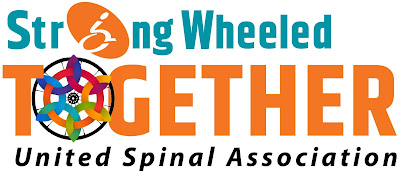October is breast cancer awareness month. As we close out the month, we want to remind you about the importance of breath health! Today we'll learn about why it's important for people with disabilities to keep breast health in mind. It's important that you have checkups with your doctor. Every person should conduct self-exams monthly too. Keep reading to learn more.
Mammograms
A mammogram is an x-ray image of a breast, taken at a doctor's office. The goal of a mammogram is to detect cancer in breast tissue. The Centers for Disease Control (CDC) says that women ages 50-74 should get a mammogram every two years. The CDC says women ages 40-49 should talk to their doctor about if they need a mammogram sooner than age 50.
Unfortunately, women with disabilities are less likely to have gotten a mammogram over the last two years than their non-disabled peers. In fact, 61% of women with disabilities have received mammograms over the last 2 years while 75% of non-disabled women have gotten their mammograms over the same time frame.
Here are some tips you can use to make your mammogram a more enjoyable and successful experience:
1. Discuss your disability & related concerns with staff at the mammography clinic; this may include letting the staff know that you need assistance or accommodations with,- Lifting or moving your arms
- Transferring from your chair or scooter
- Sitting upright
- Dressing / undressing
- Balancing
- Additional time
- Accessible communications
- Machinery may need to be adjusted
2. Dress in a blouse that easily opens to the front
3. Do not wear deodorant, baby powder or any type of heavy, emollient lotion
4. If you wear a bra, choose one that is easily removed
5. Consider bringing a friend or trusted aid for additional support
6. Unhappy with the services received? Speak up! Your voice may improve access for yourself and others.
Celebrate breast health this month by discussing your next mammogram with your healthcare provider!
Resources:
- CDC, Women with Disabilities and Breast Cancer Screening
- Susan G. Komen, Facts for Life, Women with Disabilities
Self-Exam
It is important you know the shape, size, and feeling of your own breasts. Any changes or irregularities should be reported to your doctor immediately! Any changes could mean more testing is needed check for breast cancer. To recognize changes you should examine your breasts regularly. As a person with a disability, self-breast exams are encouraged, although you may have to experiment with positioning or ask for assistance.
Below are additional tips for a successful self-breast examination:
- Check your breasts using a mirror. Make sure to look from all angles – front and both sides. You should place your arms 1st at your sides, then interlock your fingers behind your head and then hands on your hips & examine how your breasts look in each position, paying particular attention to any changes in shape or size.
- With the pads of your fingers, feel your breasts while you are lying down, sitting, and standing up. The pads of your fingers should move in a circular motion, pressing lightly, examining all your breast & chest area. You are looking for lumps or knots in the tissue.
- Repeat this self-examination below the collarbone & in the underarm areas, again searching for lumps or knots growing in this tissue.
Remember, it is ok and encouraged to get assistance and to modify in ways that work for your body. If you notice any of the following during your self-exam, contact your health care provider immediately:
- a change in the size or shape of your breasts
- swelling, warmth or redness of your breasts
- a lump or knot in the breast tissue or underarm area
- a rash or scaly sore on your nipple
- pain in one spot that does not go away
- nipple discharge that appears suddenly
- the nipple or other parts of your breast pulling inward
- a dimpling or puckering of skin on your breast
Celebrate breast health this month by performing your self-breast examination!
Resource:



























